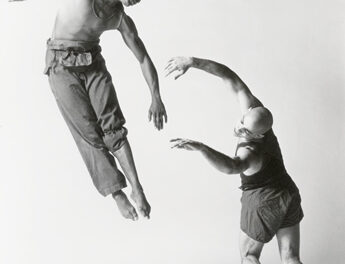More than a few critics have looked askance at the preponderance of basic repertory works in the last few seasons of Music Director Gerhardt Zimmermann’s long tenure, and Francophiles such as myself have regretted the low percentage of the great works by French composers. To be fair, the crude acoustics of Raleigh’s Memorial Auditorium swallowed subtlety. A good-sized house was on hand March 23 in Meymandi Hall for a very diverse and creative program, heard to good advantage.The opening work, Ravel’s Ma Mere L’Oye (Mother Goose) Suite, is an extended study that explores the felicities of quiet dynamics and orchestral color. Delicate woodwinds above “pp” strings opened “Sleeping Beauty’s Pavane.” Fine solos were given by principals Anne Whaley Laney, flute, Melanie Wilsden, oboe, Michael Schultz, English horn, and Concertmaster Brian Reagin. Next, “Tom Thumb” added the “p” bassoon of John Pederson to the above woodwinds. The delicate sheen on the violin sections was impressive. Horns led by Kimberly Van Pelt added hushed brass color to “Laideronnette, Empress of the Pagodas,” which features a Chinese theme. Jimmy Gilmore’s low clarinet notes were delicious, and xylophones and percussion enhanced to the “foreign” atmosphere. The last movement, “Conversations of Beauty and the Beast,” found the unidentified contrabassoonist almost hidden in front of the conductor. What a wonderful low rasp! The sad melody had a wistful quality. There were many fine solos from Reagin and harpist Anita Burroughs-Price, to mention only two. This was one of Zimmermann’s best efforts in French repertory.
The second of two Raleigh performances of Russell Peck’s unusual and seemingly unlikely Harmonic Rhythm (Concerto for Timpani and Orchestra) (2000) came next. For CVNC, I reviewed the third of three Winston-Salem Symphony performances on February 10. Peck is one of the more successful contemporary composers and is based in Greensboro. Zimmermann’s NC Symphony and Canton (Ohio) Symphony were among more than forty orchestras that formed what is said to be the largest consortium in history to fund this commission. The initiative began with Savannah Symphony Orchestra Music Director Philip Greenberg and their Principal Timpanist, Jim Brown. Peck envisioned the timpani soloist as the hero of a series of cinematic episodes, and much of the orchestral scoring is reminiscent of movie music. The challenge of using the timpani is that there are only five notes, expanded however through adjustments made by foot pedals. Orchestral sections help link the solo episodes by allowing time to readjust or choose from a large array of mallets. I have always regarded NCS Principal Timpanist John Feddersen as one of finest I have ever heard, and so he proved to be once again. From “ppp” notes more felt than heard, a timpani crescendo built quickly to forte. From time to time, there were lush high string themes. There was a dialog between lyric timpani and aggressive brass. An extended percussion sequence featured two xylophones and a marimba. One episode featured timpani played by bare hands and fingers. The later, fast sections were a tour de force of fancy footwork. The composer’s fine web site, at http://www.russellPeck.com/, will eventually feature notes, musical excepts and other information about Harmonic Rhythm .
Rare choral fare with the well-rehearsed members of the Raleigh Oratorio Society, prepared by their director Alfred Sturgis, ended the concert. About three fourths of the singers were deployed in the four rows of seats above the stage and the others were on risers just beneath behind the orchestra players. On the left and right of the main chorus six extra trumpets were stationed antiphonally, in threes. Walton’s Belshazzar’s Feast is a dramatic setting of the fateful night during the Babylonian captivity of the Jews when King Belshazzar’s sacrilege was halted by a disembodied hand that wrote upon the wall the message that the King had been “weighed in the balance and found wanting.” Osbert Stilwell based his text on the Fifth Chapter of the Book of Daniel, the 18th Chapter of the Book of Revelation, and Psalms 81 and 137. Choral diction was excellent, and the text could be easily followed. The orchestration is spare and dramatically effective from the stark opening with three trombones. Firm low bass string notes were striking. Fine solos were given by an unidentified bass clarinetist and a saxophonist. Contrasted use was made of a solo male chorus, mixed chorus and a women’s chorus. The stentorian baritone soloist was Wilmington native John Cheek, a long-time stalwart of the Metropolitan Opera in New York. The choral portion, “By the waters of Babylon,” was memorable-with a shake of his booty, Zimmermann dealt effectively with the jazzy syncopations of the lively, sprightly score. The famous hand-writing-on-the-wall sequence came off dramatically. For this critic, this was a welcome change from the too frequent programming of the Requiems of Brahms and Verdi. Bravo.












